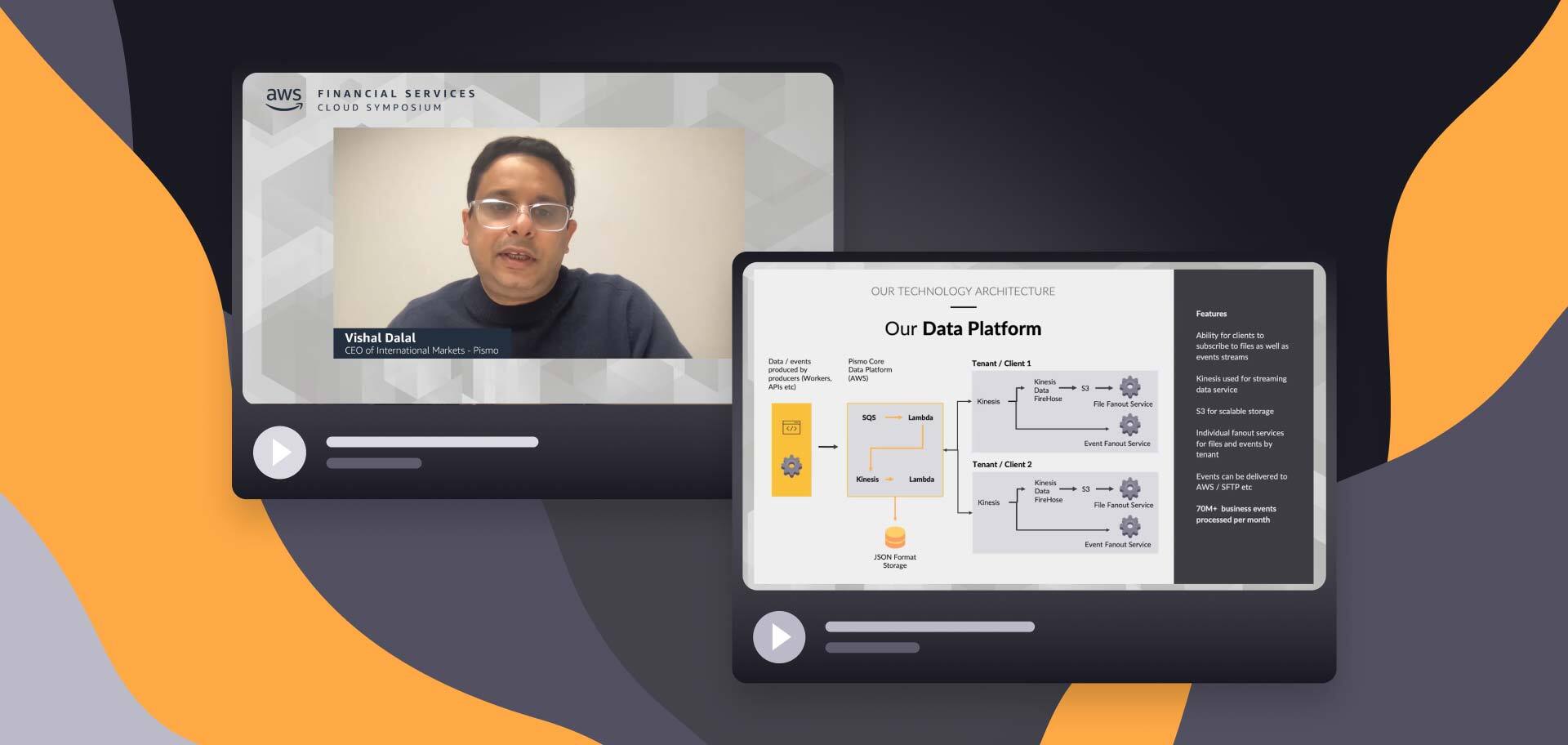With the right architecture, modern technology and proper care with security, a core banking system can be an engine for innovation and help a bank or fintech be successful. Vishal Dalal, CEO for the USA, Europe and Asia at Pismo, explains, during his talk for the AWS Financial Services Cloud Symposium.
The problems with legacy systems
“In the past, core banking systems used to cost millions of dollars,” says Vishal, referring to the computer systems that manage accounts and transactions in financial institutions. The high cost can be a severe problem for banks that still use legacy systems to compete against fintechs and neobanks. To be competitive, “you want to pay only for what you are using.”
But those expensive legacy systems, based on mainframes and traditional data centres, have other limitations. They don’t allow rapid development and deployment of new features. So they don’t enable nimble innovation and they don’t automatically expand when there is a sudden increase in transaction volume.
“On Black Friday, for example, the number of purchases goes through the roof. You don’t want to stand in a data centre frantically trying to add computer capacity. Instead, you need something that uses the power of the cloud — in addition to being innovative, transparent, efficient, and resilient. That’s what a modern core banking or card processing system is supposed to be.”
Read more:
Is your core banking system a threat to your business?
The solution is in the cloud
“Pismo and a few other players solved these issues by redesigning the core banking system from the ground up and attacking the problems of safety, affordability, resilience, and ease of innovation,” says Vishal. He goes on to describe the cloud-native financial services platform developed by Pismo:
“It’s a MACH platform, a new class of systems that have come up in the last few years. MACH stands for Microservices, API-driven, Cloud-native, and Headless. Headless means we prefer that our more sophisticated clients fine-tune their user experience. We do provide UX/UI screens, but our more mature clients tend to manage their user experience themselves — and we give them the underlining APIs to do it.”
The Pismo platform hosts 30 million accounts and is growing at the rate of 2 million accounts per month. It had 7.4 billion API calls during October 2021 and made more than 400 releases in a single month. “So we have proved that our platform works at scale,” says Vishal.
The platform is also economically attractive: “We charge based on active accounts. If a bank has 30 thousand active accounts, that’s what we charge for. If a bank has a million accounts, that’s what we charge for — nothing more, nothing less. We take care of all the underlying costs so you won’t see a surprise item on your bill.”
Real-time data
Vishal also spoke about the kind of data our platform provides for analysis, accounting and regulatory purposes: “When we talk to our customers, they say that our data architecture is our most powerful feature.”
“We have events performed by our software workers and APIs, like opening accounts, authorising transactions, changing an account or a phone number, initiating a dispute or creating a new product, for instance. All these events generate real-time data that our clients can use programmatically.”
Security is crucial
As is expected for a financial services platform, Pismo puts a lot of effort into security: “We adopt security controls in multiple layers. First, we ensure that we write the code correctly. Then we do a very detailed static code analysis and make sure that security and privacy are built-in by design.”
“We don’t waste any of the wonderful features that AWS provides us. So we adhere to data encryption in both transit and rest, and we use sophisticated tools to analyse our audit logs regularly. We also carry out external and internal penetration tests and we are now moving to chaos engineering, red teaming and blue teaming. As you can imagine, there is no room for complacency when talking about security.”
Here is the complete presentation with more details about core banking systems and the Pismo platform:









